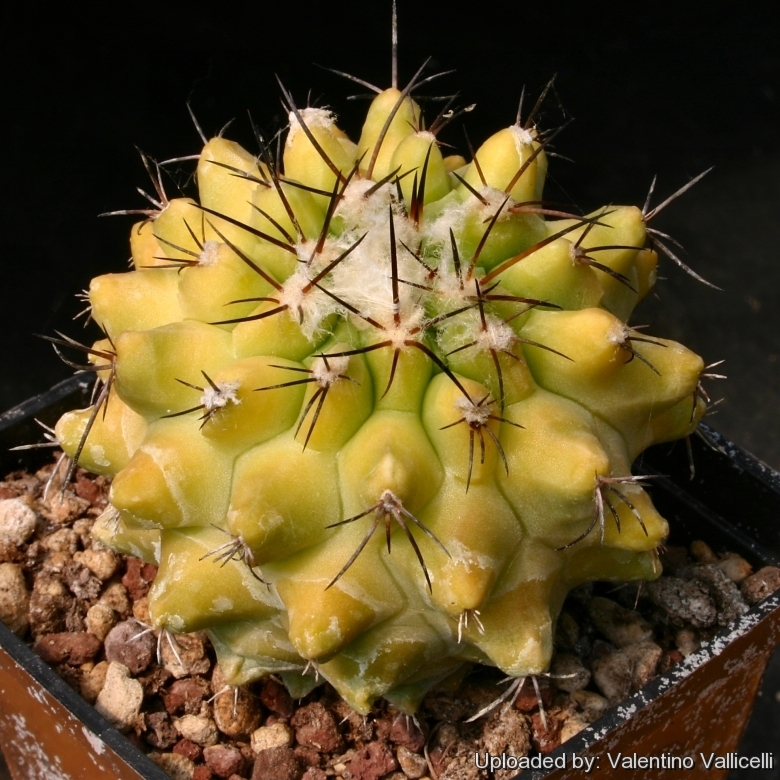Accepted Scientific Name: Copiapoa mollicula F.Ritter
Taxon 12: 30. 1963

Copiapoa mollicula f. variegata Photo by: Valentino Vallicelli
Origin and Habitat: Garden origin (Nursery produced cultivar)
Synonyms:
See all synonyms of Copiapoa mollicula
back
Accepted name in llifle Database:Copiapoa mollicula F.RitterTaxon 12: 30. 1963Synonymy: 2
back
Description: The normal Copiapoa molliculaSN|1424]]SN|1424]] is a lovely small geophyte cactus usually solitary or forming small clumps. The variegated form (Copiapoa molliculaSN|1424]]SN|1424]] f. variegata) has sectors, patches, shades or stripes with yellow colours, even distinct shades of green. Plants with variegated stems are often attractive and highly prized. A very few variegated plants sprout unpredictably time by time among normal green seedling and are very rare. Variegated plants are also found in habitat even though with low frequency, but these plants are particularly sensitive and rarely survive in the harsh environment of their native land.
Stem: Grey-green and yellow, thick, soft, flat to globular 7,5 cm in diameter. The apex is woolly.
Ribs: 10 to 14 ribs
Roots: Heavy underground root.
Central spines: (0-)1 to 3 blackish, up to 2,5 cm long;
Radial spines: 5 to 9 (sometime absent)
Flowers: Yellow, campanulate, about 3 cm long and grow from the centre of the white wool at the apex.
Subspecies, varieties, forms and cultivars of plants belonging to the Copiapoa mollicula group
Cultivation and Propagation: Variegated cacti are regarded as choice and difficult in cultivation, but despite that many of them are relatively easy to grow. But be aware that they cannot tolerate prolonged exposure to direct sun light (especially during the hottest summer days), so grow them in half-shade or under filtered sun. They are sometime seen as grafted plants, but some of this colourful plants (those with some chlorophyll) are able to grow on their own roots and are priced by collectors.
Soil: Use mineral well-permeable substratum with little organic matter (peat, humus).
Watering: Water sparingly from March till October, and keep perfectly dry in winter, at temperatures from 5 to 15 degrees centigrade. (In general these plants are more tender and cannot endure freezing temperatures). In the rest period no high atmospheric humidity!!
Propagation: By seeds, grafting or cutting. Because the variegation is due to the presence of two kinds of plant tissue, propagating the plant must be by a vegetative method of propagation that preserves both types of tissue in relation to each other. A most common way way to cultivate this partially de-coloured cultivars is to graft them onto another cactus which has chlorophyll and which will provide sugar to the mutant scion. The chlorophyll containing bottom part of the graft, called the stock, can be any number of different columnar cactus species.
Remarks: Seeds from variegated parents often give raise to some variegated seedlings too.










